What Is Power Transformer: Essential Functions in Energy Distribution?
Have you ever wondered how electricity travels from power plants to your home? It’s not as simple as you might think. There’s a crucial player in this journey that often goes unnoticed: the power transformer.
A power transformer is a vital device in energy distribution that changes voltage levels between electrical circuits. It allows electricity to be transmitted efficiently over long distances and then safely used in homes and businesses. Power transformers are essential for maintaining a reliable and stable electrical grid.
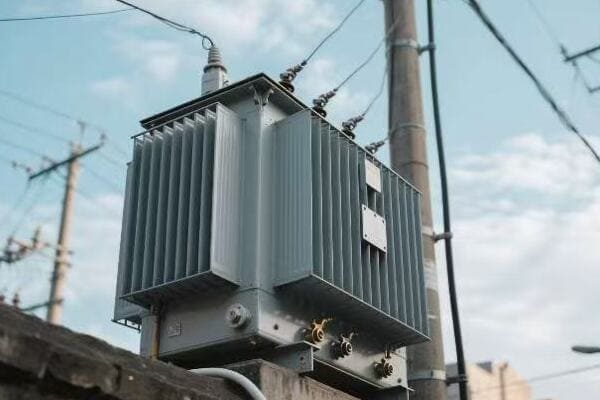
As someone who has worked in the power industry for years, I’ve seen firsthand how important these devices are. They’re like the unsung heroes of our electrical world. Let’s dive deeper into what power transformers do and why they’re so crucial for keeping our lights on.
The Magic Box: How Does a Power Transformer Turn High Voltage into Home-Friendly Electricity?
Imagine trying to fill a small glass with water from a fire hose. That’s kind of what it would be like to use electricity straight from a power plant. It’s just too powerful. This is where transformers come in.
Power transformers use electromagnetic induction to change voltage levels. They step down high voltage from power plants to lower, safer levels for home use. This process involves two or more coils of wire wrapped around an iron core, which transfers energy between circuits without a direct electrical connection.
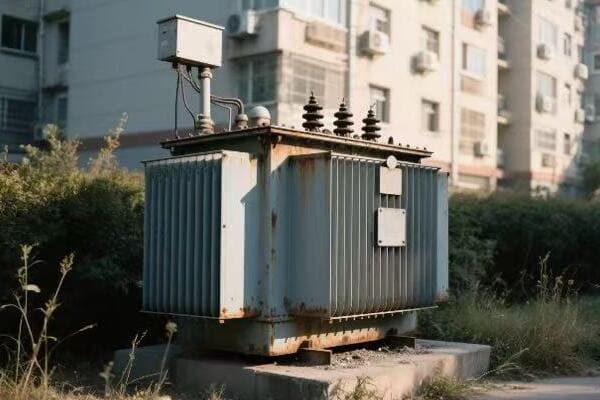
I remember the first time I saw the inside of a transformer. It was during my early days in the industry, and I was amazed by how such a seemingly simple device could perform such a crucial function. Let me break down how this "magic box" works.
The Basics of Transformer Operation
At its core, a transformer’s operation is based on two principles:
- Changing magnetic fields can induce an electric current in a wire.
- Electric current flowing through a wire creates a magnetic field around it.
Here’s how these principles come together in a transformer:
- Primary Coil: This is where the high-voltage electricity enters the transformer.
- Iron Core: This amplifies the magnetic field created by the primary coil.
- Secondary Coil: This is where the transformed electricity exits.
The Transformation Process
Let’s walk through the process step by step:
- High-voltage electricity enters the primary coil.
- This creates a changing magnetic field in the iron core.
- The changing magnetic field induces a current in the secondary coil.
- The voltage of this induced current depends on the number of turns in the secondary coil compared to the primary coil.
Here’s a simple table to illustrate:
| Coil | Number of Turns | Voltage |
|---|---|---|
| Primary | 1000 | 10,000V |
| Secondary | 100 | 1,000V |
In this example, the secondary coil has 1/10th the turns of the primary coil, so the output voltage is 1/10th of the input voltage.
Efficiency and Heat Management
One of the amazing things about transformers is their efficiency. A well-designed transformer can be over 99% efficient. However, even that small loss can generate a lot of heat when dealing with large amounts of power.
This is why you’ll often see transformers with:
- Cooling fins
- Oil baths
- Fans or pumps
I once worked on a project to upgrade a substation’s cooling system. It was fascinating to see how much engineering goes into just keeping these devices at the right temperature.
Transformers might seem like simple devices, but they’re the result of over a century of engineering refinement. They’re a perfect example of how sometimes, the most important technologies are the ones we rarely think about.
From Power Plant to Plug: Why Are Transformers the Superheroes of Our Electrical World?
Have you ever thought about the journey electricity takes from a power plant to your phone charger? It’s an epic adventure, and transformers are the superheroes that make it possible. Without them, our electrical grid simply wouldn’t work.
Transformers are crucial in electrical distribution because they allow electricity to be transmitted efficiently over long distances and then used safely in homes and businesses. They step up voltage for transmission, reducing power losses, and then step it down for local distribution and consumption.
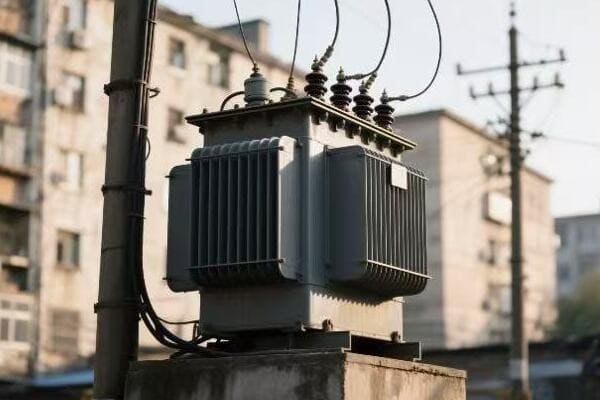
I’ve spent years working with power systems, and I’m still amazed by how transformers enable our modern electrical grid. Let’s explore why these devices are so important.
The Journey of Electricity
To understand why transformers are so crucial, we need to follow the journey of electricity:
- Generation: At the power plant
- Transmission: Over long distances
- Distribution: To local areas
- Consumption: In homes and businesses
Transformers play a key role at each stage. Here’s how:
| Stage | Transformer Type | Function |
|---|---|---|
| Generation | Step-up | Increases voltage for efficient transmission |
| Transmission | – | (No transformation during transmission) |
| Distribution | Step-down | Decreases voltage for local distribution |
| Consumption | Step-down | Further reduces voltage for safe use in buildings |
Why High Voltage for Transmission?
You might wonder why we need to increase voltage for transmission. The answer lies in power loss. When electricity flows through a wire, some energy is lost as heat. This loss is proportional to the current flowing through the wire.
Here’s the key: for the same amount of power, higher voltage means lower current. Lower current means less power loss. This is why we use extremely high voltages for long-distance transmission.
I once visited a high-voltage transmission line. The buzz of electricity was almost palpable. It’s incredible to think that transformers make it possible to safely step this power down to the 120V we use in our homes.
Transformers in Action
Let’s look at a simplified example of how transformers work in the grid:
- A power plant generates electricity at 20,000V
- A step-up transformer increases this to 765,000V for transmission
- At a substation, a step-down transformer reduces it to 10,000V for local distribution
- Another transformer on your street reduces it further to 240V
- A final transformer (often in your home’s circuit box) brings it down to 120V for your outlets
Each of these transformations is crucial for balancing efficiency and safety.
Beyond Voltage Change
Transformers do more than just change voltage levels. They also:
- Isolate Circuits: This provides protection against faults and surges
- Balance Loads: Some transformers help distribute power evenly across three-phase systems
- Regulate Voltage: Some transformers can adjust their output to maintain steady voltage despite fluctuations in supply or demand
I once worked on a project to install a new substation in a rapidly growing area. It was fascinating to see how the right combination of transformers could take a massive influx of power and distribute it safely and efficiently to thousands of new homes and businesses.
Transformers truly are the unsung heroes of our electrical world. They work tirelessly, often for decades, to ensure that we have safe, reliable power at our fingertips. Next time you plug in your phone or turn on a light, spare a thought for the transformers that made it possible.
Transformer Types: Big Ones, Small Ones, and Everything in Between
When you hear "transformer," you might think of those big grey boxes in your neighborhood. But did you know there’s a whole world of transformers out there, from tiny ones in your phone charger to massive ones in power stations?
Transformers come in various types and sizes, each designed for specific applications. These include power transformers for electricity transmission, distribution transformers for local power supply, and smaller transformers for electronic devices. Their design varies based on factors like power capacity, voltage levels, and cooling methods.
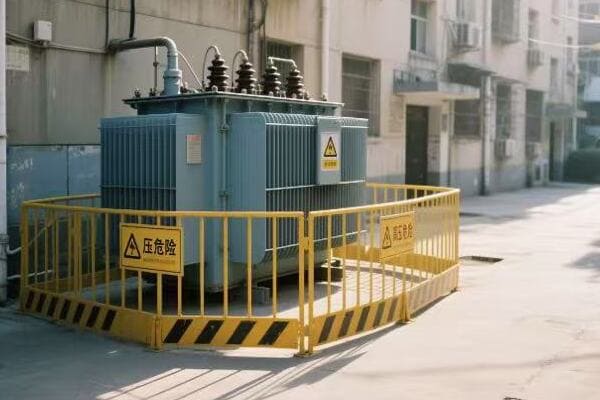
In my years in the power industry, I’ve worked with all sorts of transformers. Each type has its own quirks and challenges. Let’s explore the different types of transformers and what makes each one special.
Power Transformers: The Heavy Lifters
Power transformers are the giants of the transformer world. They’re used in power stations and substations to step voltage up for transmission or down for distribution.
Key features:
- High power capacity (up to hundreds of MVA)
- High voltage (up to 765 kV or more)
- Often oil-cooled for better insulation and heat dissipation
I once visited a substation with a massive 500 MVA transformer. It was the size of a small house and required a special transport system just to move it!
Distribution Transformers: Bringing Power to Your Neighborhood
These are the transformers you’re most likely to see in your daily life. They’re the ones mounted on poles or in those green boxes in your neighborhood.
Key features:
- Medium power capacity (up to about 5 MVA)
- Medium voltage (typically 4-35 kV primary, 120/240V secondary)
- Can be oil-filled or dry-type
Instrument Transformers: The Precision Tools
These smaller transformers are used for measuring voltage (potential transformers) or current (current transformers) in power systems.
Key features:
- High accuracy
- Used with meters and protective relays
- Provide electrical isolation for safety
Special Application Transformers
There are also many specialized transformers for specific uses:
| Type | Application | Special Features |
|---|---|---|
| Autotransformers | Voltage adjustment | Single winding, more compact |
| Isolation Transformers | Electrical safety | Provides galvanic isolation |
| Rectifier Transformers | DC power supplies | Designed for high harmonic currents |
| Traction Transformers | Electric trains | Compact, lightweight design |
Cooling Methods: Keeping It Cool
One of the biggest challenges in transformer design is managing heat. Different types of transformers use different cooling methods:
- Oil-Immersed: The core and windings are immersed in insulating oil. This is common for large power transformers.
- Dry-Type: These use air for cooling and insulation. They’re often used indoors where oil-filled transformers would be a fire hazard.
- Gas-Insulated: Some modern transformers use sulfur hexafluoride (SF6) gas for insulation.
I once worked on a project to replace an old oil-filled transformer with a modern dry-type unit in a hospital. The improved safety and reduced maintenance were significant benefits.
Smart Transformers: The Future is Here
As our power grids become smarter, so do our transformers. Modern "smart" transformers can:
- Monitor their own health
- Adjust voltage levels automatically
- Communicate with grid control systems
These features help improve grid stability and efficiency. I’m excited to see how these technologies develop in the coming years.
From the tiny transformer in your phone charger to the massive units in power stations, each type of transformer plays a crucial role in our electrical systems. Understanding these different types helps us appreciate the complex network that keeps our lights on and our devices charged.
Keeping the Lights On: How Transformers Make Sure Your Fridge Stays Cold and Your Phone Stays Charged
Have you ever experienced a power outage? It’s frustrating, right? Suddenly, your fridge stops humming, your lights go out, and your phone battery becomes a precious resource. But have you ever wondered what keeps these annoyances from happening more often? The answer, in large part, is transformers.
Transformers play a crucial role in maintaining a stable and reliable power supply. They help regulate voltage, manage power distribution, and isolate different parts of the grid. This ensures that your home appliances receive a consistent power supply, protecting them from damage and keeping them running smoothly.
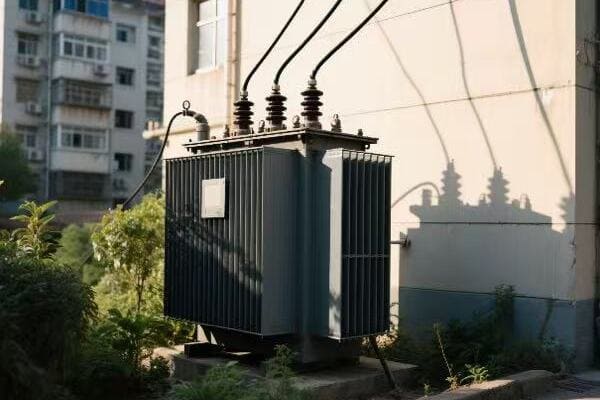
As someone who’s spent years working on power systems, I’ve seen firsthand how transformers keep our modern lives running smoothly. Let’s dive into how these devices work tirelessly to keep your lights on and your devices charged.
Voltage Regulation: Keeping the Power Just Right
One of the key functions of transformers in power distribution is voltage regulation. Here’s why it’s important:
- Consistent Power Supply: Your appliances are designed to work at a specific voltage (usually 120V in the US). Too much or too little voltage can damage them.
- Efficiency: The right voltage ensures that appliances operate efficiently.
- Safety: Proper voltage regulation helps prevent electrical fires and other hazards.
Many distribution transformers come with tap changers that can adjust the output voltage. I once worked on a project to upgrade these tap changers to automatic systems. It was amazing to see how they could respond in real-time to changes in load, keeping the voltage steady despite fluctuations in demand.
Load Management: Balancing the Power
Transformers also play a crucial role in managing the load on the power system. Here’s how:
- Load Sharing: Multiple transformers can share the load in a neighborhood, preventing any one transformer from being overloaded.
- Peak Load Handling: Transformers are designed to handle short-term overloads during peak usage times.
- Fault Isolation: If there’s a problem in one area, transformers can help isolate it, preventing widespread outages.
| Time of Day | Typical Load | Transformer Action |
|---|---|---|
| Night | Low | May reduce output slightly |
| Morning | Rising | Increases output to meet demand |
| Afternoon | High | Maintains high output, may engage cooling systems |
| Evening | Peak | Operates at maximum capacity, may allow short-term overload |
I remember working on a system during a heatwave. The transformers were running at their limits, but thanks to good design and maintenance, they kept the power flowing despite the unprecedented demand from air conditioners.
Protection and Isolation: Keeping Problems Contained
Transformers also serve as a form of protection for the grid and your home appliances:
- Electrical Isolation: Transformers create a barrier between different parts of the grid. This can prevent problems from spreading.
- Surge Protection: Some transformers can help absorb voltage spikes, protecting your appliances.
- Fault Current Limitation: Transformers can limit the amount of current that flows during a fault, reducing damage.
I once investigated a case where a lightning strike hit a power line. The local distribution transformer prevented the surge from reaching homes in the area, likely saving thousands of dollars in damaged appliances.
Efficiency and Longevity: Keeping Costs Down
Modern transformers are designed to be highly efficient and long-lasting:
- Low Losses: High-efficiency transformers minimize energy waste, keeping your electricity bills lower.
- Long Lifespan: A well-maintained transformer can last 30 years or more.
- Smart Features: Newer transformers can report their status, allowing for predictive maintenance.
These features not only keep your power reliable but also help keep costs down in the long run. It’s a win-win for both consumers and power companies.
From regulating voltage to managing loads and protecting against faults, transformers work tirelessly to keep your power flowing smoothly. They’re the unsung heroes that ensure your fridge stays cold, your lights stay on, and your phone stays charged. Next time you plug in a device, spare a thought for the transformers that make it all possible.
Green Energy’s Best Friend: How Transformers Help Solar and Wind Power Reach Your Home
Have you ever wondered how the energy from those distant wind farms or solar fields makes it to your home? It’s not as simple as connecting a really long wire. The key to making renewable energy work on our grid lies in a technology that’s been around for over a century: transformers.
Transformers play a crucial role in integrating renewable energy sources into the power grid. They help manage the variable output of solar and wind power, step up voltage for long-distance transmission, and then step it down for local use. Without transformers, large-scale renewable energy projects would not be feasible.

As someone who’s worked on renewable energy projects, I’ve seen firsthand how transformers make green energy possible on a large scale. Let’s explore how these devices are helping to power a cleaner future.
Managing Variable Output: Taming the Sun and Wind
One of the biggest challenges with renewable energy is its variability. The sun doesn’t always shine, and the wind doesn’t always blow. This is where specialized transformers come in:
- Voltage Regulation: They help smooth out the voltage fluctuations from variable sources.
- Frequency Control: Some advanced transformers can help maintain grid frequency despite variations in renewable output.
- Power Factor Correction: They can adjust for the power factor issues often associated with renewable sources.
I once worked on a solar farm project where we used special transformers with on-load tap changers. These could adjust their output in real-time based on the solar panels’ output, helping to maintain a steady supply to the grid.
Stepping Up for Long-Distance Transmission
Many renewable energy sources are located far from where the power is needed. This is where step-up transformers### Stepping Up for Long-Distance Transmission
Many renewable energy sources are located far from where the power is needed. This is where step-up transformers become crucial:
- Voltage Increase: They boost the voltage from the generation site (often 600V-35kV) to transmission levels (100kV-800kV).
- Loss Reduction: Higher voltage means lower current for the same power, which reduces transmission losses.
- Enabling Remote Locations: This allows wind farms in rural areas or offshore to connect to urban centers.
I remember visiting an offshore wind farm and being amazed by the massive transformer platform. It was like a small oil rig, but instead of extracting energy, it was preparing renewable energy for its journey to shore.
Transformers in Solar Farms
Solar farms have their own unique transformer needs:
| Location | Transformer Type | Function |
|---|---|---|
| At each inverter | Small step-up | Boosts voltage from panel level to collection level |
| Collection points | Medium step-up | Combines output from multiple inverters |
| Substation | Large step-up | Prepares power for grid transmission |
Smart Transformers for a Smart Grid
As renewable energy becomes more prevalent, we’re seeing the rise of smart transformers:
- Bidirectional Power Flow: They can handle power flowing both to and from the grid, essential for systems with home solar panels.
- Real-time Monitoring: They provide data on power quality and transformer health.
- Adaptive Response: They can adjust their operation based on grid conditions.
I recently worked on a project integrating smart transformers into a neighborhood with high solar panel adoption. The ability to manage bidirectional power flow made a huge difference in grid stability.
Overcoming Challenges
Integrating renewables isn’t without its challenges:
- Harmonics: Inverters used in solar and wind can introduce harmonics. Special transformers with higher K-factors are used to handle this.
- Intermittency: Transformers need to handle rapid changes in load as clouds pass over solar panels or wind speeds change.
- Remote Locations: Transformers for renewables often need to be more rugged to handle harsh environments.
The Future of Transformers in Renewable Energy
As we move towards a greener future, transformers are evolving:
- Higher Efficiency: New materials and designs are pushing efficiency even higher.
- Smaller Footprint: More compact designs are being developed for offshore wind and urban solar installations.
- Integration with Storage: Some transformers are being designed to work seamlessly with large-scale battery storage systems.
I’m excited about a new project I’m involved in, where we’re testing transformers integrated with large-scale batteries. This could be a game-changer for managing the variability of renewable energy.
Transformers might not be the first thing you think of when it comes to green energy, but they’re absolutely essential. They’re the unsung heroes making it possible for the clean energy from wind turbines and solar panels to power our homes and businesses. As we continue to shift towards renewable energy, the role of transformers will only become more important. They’re not just part of our energy past; they’re a crucial part of our energy future.
Conclusion
Power transformers are the unsung heroes of our electrical grid. They enable efficient power transmission, ensure safe voltage levels for home use, and play a crucial role in integrating renewable energy. As we move towards a greener future, transformers will continue to evolve, becoming smarter and more efficient to meet our changing energy needs.
Free CHBEB Transformer Catalog Download
Get the full range of CHBEB transformers in one catalog.
Includes oil-immersed, dry-type, pad-mounted, and custom solutions.
Quick Message
Request A free quote
We'd like to work with you
- +86 15558785111
- [email protected]
- +86 15558785111
What We Do
CHINA BEI ER BIAN (CHBEB) GROUP, with 218 million in registered capital, originated from Beijing Beierbian Transformer Group. Headquartered in Beijing for R&D, it operates major production bases in Nanjing and Yueqing, producing high-quality products.
Latest Product
address
BeiJing
No 3,RongJing East Road,BeiJing Economic Technological Development Area,BeiJing,China
JiangSu
No 7️Xiangfeng Road,Jiangning,NanJing,JiangSu,China
WenZhou
No.211, Wei 16 Road, Industrial Zone, Yueqing, Wenzhou, Zhejiang, China.
XiangYang Industrial Zone ,YueQing,WenZhou,ZheJiang,China
contact us
- [email protected]
- +86 13057780111
- +86 13057780111
- +86 15558785111
Copyright © Bei Er Bian Group


